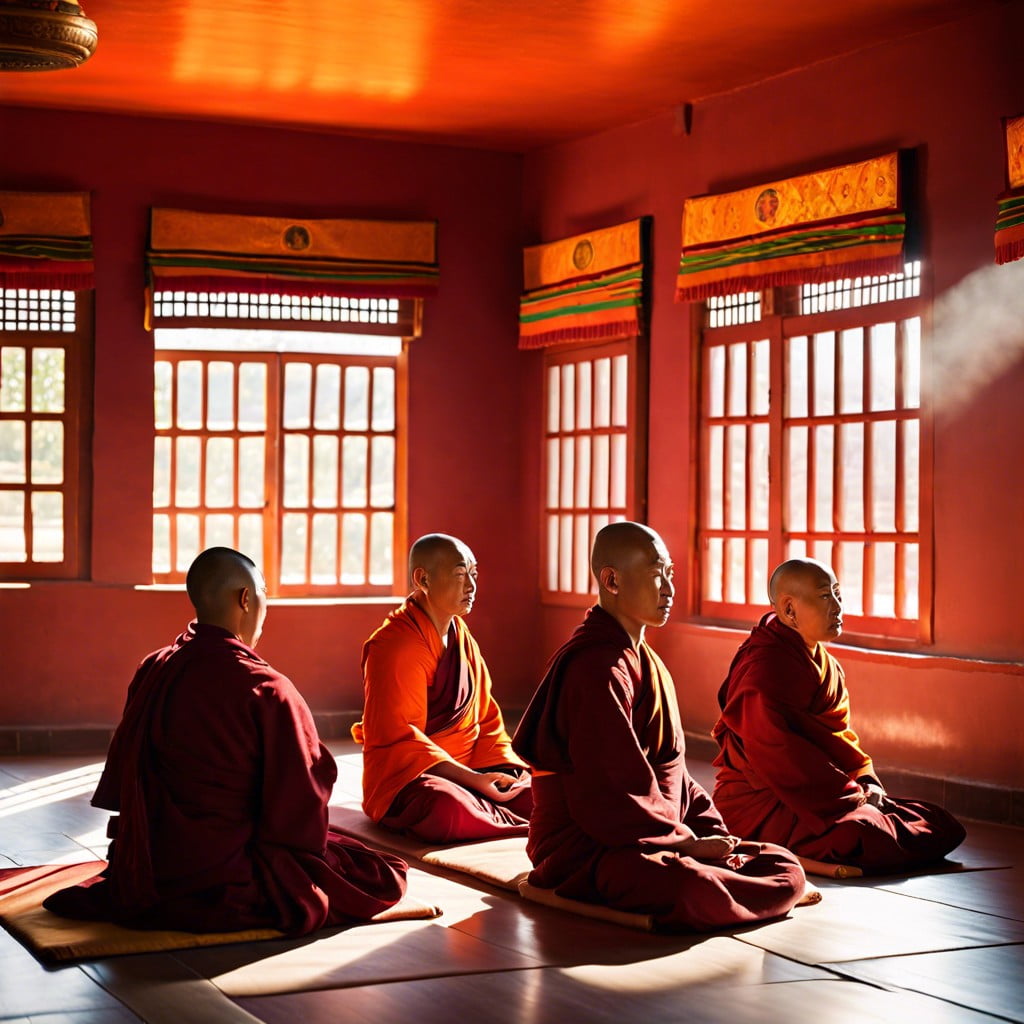Discover the serene lifestyle of monks, where daily routines are rooted in meditation, mindfulness, and maintaining monastic traditions.
Key takeaways:
- Monks have a daily routine rooted in meditation and mindfulness.
- Meditation and prayer are essential practices for monks.
- Monks dedicate significant time to study and scriptural learning.
- Monks engage in community work and chores as a spiritual exercise.
- Monks actively participate in local communities, providing service and guidance.
Daily Routine of Monks

Rising before the sun does, monks greet the day with vigor. Their mornings usually commence with silence and meditation, setting a serene tone. As daylight breaks, they may partake in chants and prayers, harmonizing their spirits with the rhythm of the day.
With mindfulness, breakfast follows, often eaten in quiet contemplation. Post meal, some may engage in work that sustains their community: gardening, cleaning, and maintaining the grounds. Others might immerse themselves in the craft of candle or incense making.
Afternoons bring time for study and reflection. Reading spiritual texts or discussing philosophical concepts, monks delve into wisdom both old and new. This intellectual nourishment goes hand in hand with their physical and spiritual sustenance.
Evenings circle back to quietude with meditation. Before a restful night, there’s an aura of gratitude, a gentle review of the day, and perhaps collective prayers. This rhythm creates a life focused on simplicity and enrichment from within, a day-to-day existence that treasures inner growth and communal harmony.
Meditation Practices and Prayer
Monks often rise before the sun, embracing the quietude of dawn for deep meditation. They settle into stillness, aligning breath with movement in a dance of mindfulness. This practice is not just about sitting in silence; it’s an inner journey to cultivate clarity and compassion.
Prayer, meanwhile, is their heartbeat, a rhythmic expression of gratitude and intention. Chanting ancient verses, they weave a tapestry of sound that blankets the monastery in peace.
Each mindful breath and mantra is a step on the path to enlightenment, a quest not for the faint of heart but for the committed soul. Monks dedicate hours to these spiritual exercises, crafting a sanctuary of tranquility within their being.
The intention is twofold: to develop personal wisdom and to send ripples of positive energy into the world. Through these hallowed rituals, monks embody a serene strength, becoming beacons of tranquility in a bustling world.
Study and Scriptural Learning
Delving into ancient texts, monks spend significant time expanding their understanding and interpretation of spiritual doctrines. This intellectual pursuit deepens their insights into life’s mysteries and provides guidance for their spiritual journey. Often, they gather in communal settings, discussing and debating the meanings and applications of these sacred writings.
This scholarly endeavor is not just an academic exercise but a form of devotion. By connecting with the wisdom of past masters, monks cultivate an internal landscape rich with philosophical contemplation. It’s as though every page turned and every ancient word whispered adds bricks to the fortress of their faith.
Moreover, the expertise they develop is shared with others through teachings and guidance, offering a beacon of knowledge to fellow seekers. This continuous cycle of learning and teaching reinforces the bedrock of monastic life and perpetuates a legacy of wisdom.
Community Work and Chores
Monks embrace a shared life, where rolling up sleeves in communal tasks is as much a spiritual exercise as meditation. These chores, varying from cooking, gardening, to repairing structures, are approached with a mindfulness that turns menial tasks into acts of meditation. Regular participation in such activities fortifies a sense of purpose and strengthens the community bond.
Beyond their immediate surroundings, monks often extend a helping hand to neighboring villages and towns. Whether they’re teaching, offering counsel, or assisting in local projects, their aim is to live altruistically. This outward service is anchored in the belief that compassion in action is as transformative as deep contemplation.
Despite the serene robes and the quietude one associates with monastic life, a flurry of activity goes on behind monastery walls. To a monk, every task is a path to enlightenment, an opportunity to practice presence and humility. In the act of doing, they find another layer of their spiritual journey.
Engagement in Local Communities
Monks often step outside their monasteries and actively participate in surrounding neighborhoods. This involvement can encompass a variety of community services such as providing food to the less fortunate, educating children, or offering spiritual guidance to those in need. They may also contribute to environmental conservation efforts or participate in interfaith dialogues, promoting peace and understanding across different beliefs.
Their presence in community events is not only about service but also exemplifies living a life of compassion and mindfulness. Through their actions, monks serve as a bridge, connecting the spiritual teachings with the everyday lives of the people they interact with. Far from being isolated, they show that one’s inner peace can have a ripple effect, fostering social harmony and collective well-being. With each benevolent act, they embody the principles they cherish, turning abstract concepts into tangible benefits for others.